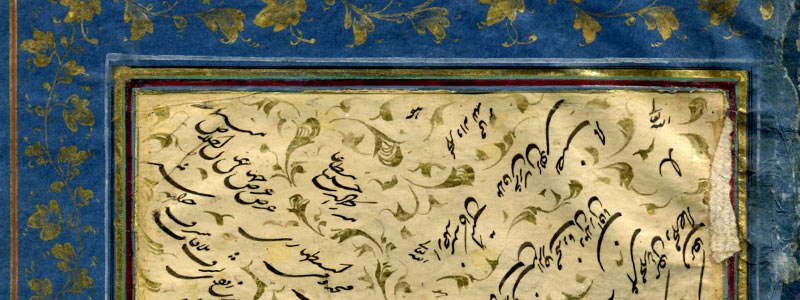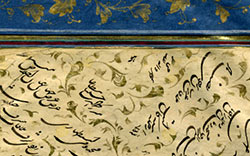Mohammad Shafi‘ Hosayni was more popularly known as Shafi‘ā and was given the title ‘Abbāsi. He was born in Herat in the first half of the seventeenth century. Shafi‘ā held a position as a court clerk under Mortezā Qoli Shāmlu, the governor of Herat. Mortezā Qoli Shāmlu was also a famous calligrapher and practitioner of the Shakastah script (a form of writing roughly equivalent to cursive) in his own right. During this time, Shafi‘ā worked incessantly to perfect his art. He went on to elevate the elementary forms that Shakastah took in his time, transforming it into a more structured, standardized script. Most of his extant works were written between 1652 to 1670 CE.
It is due to this labor and association that most sources date the beginning of Shakastah Nasta‘liq to the time of Shafi‘ā and Mortezā Qoli Shāmlu. Although there are extant manuscripts in the Shakastah script that date back to the earlier part of the seventeenth century, before the time of these two masters, it is generally accepted that their work standardized Shakastah Nasta‘liq and gave it the splendour for which it is known today. Shafi‘ā’s extant works consist of manuscripts as well as single-page works of calligraphy collected in albums. Biographers record that Mohammad Shafi‘ died at the age of 85, around 1670 CE.




